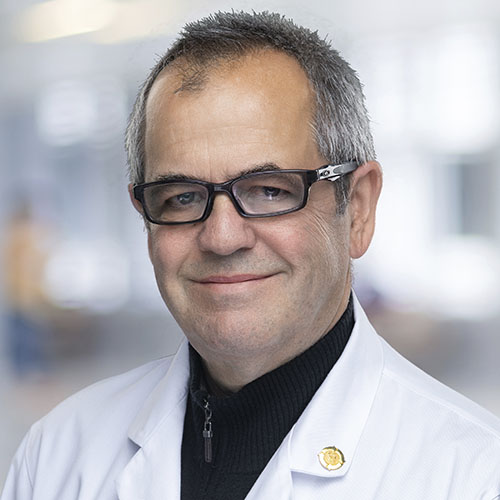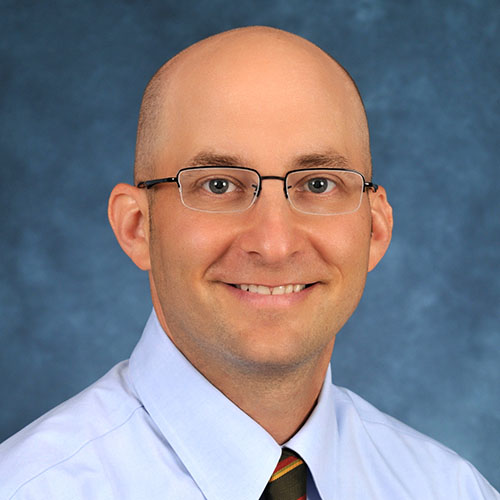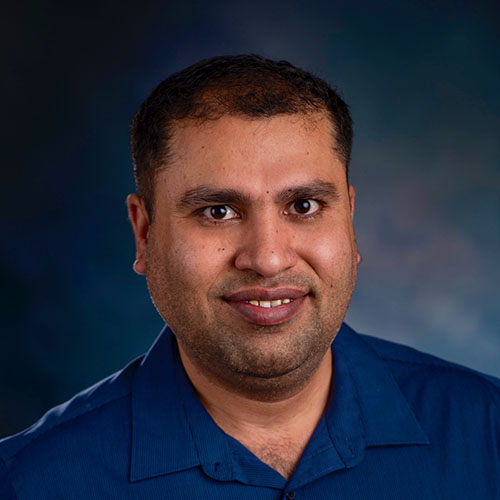
“We can’t waste time. There’s an urgent need to find something.”
So says Richard Novak, MD, head of the Division of Infectious Diseases at UI Health, talking about trials he oversees to find a treatment for COVID-19 — and echoing the sentiment of countless researchers who spend each day on the same mission. Although they’ve investigated treatments and vaccines for other frightening pathogens, researchers say that combating COVID-19 feels different than any work they’ve ever done.
“It’s a totally different scenario when the pandemic is around you,” says Ralph Baric, PhD, professor of epidemiology and of microbiology and immunology at the University of North Carolina Gillings School of Global Public Health. “It’s a totally different scenario when it’s people in your community becoming sick. You’re seeing friends infected and suffering. It becomes very personal.”
The speed, ferocity, and ubiquity of the disease have forced changes in how researchers work and live. They feel more pressure to succeed but see more collaboration among peers; worry about the freeze on other disease research but see more enthusiasm for novel ideas; feel more fear among colleagues but see hope in early discoveries.
Several of them took time to share reflections. The conversations have been condensed for space.
Fear for lost research, stifled careers

Sallie Permar, MD, PhD
Professor of pediatrics, immunology, and molecular genetics and microbiology
Duke University School of Medicine
We’ve had to close down our work on every other virus, and those [viruses] have not gone away. You’re trying to mitigate the losses to all your other research while you’re rapidly growing an area of research that you never expected to take on.
Zika was something you could jump into and make a big impact quickly, but you were not facing this very bleak situation of having to put everything else aside. By putting everything else on hold while you focus on one thing, there will be losses in research that will be difficult to recover.
The thing I worry the most about is the loss, potentially, of a generation of researchers who are facing major obstacles in productivity and being able to develop independent [research] programs that are outside of SARS-COV-2. This [focus on COVID-19] could be an opportunity for some trainees, but not everyone is going to become a virologist. We still need cancer research. We still need diabetes research. Other diseases will only worsen during this time.
New enthusiasm for clinical trials

Timothy Murphy, MD
Director, Clinical and Translational Science Institute
Jacobs School of Medicine and Biomedical Sciences at the University of Buffalo
In clinical research, we spend a lot of time trying to gain people’s trust. There’s a certain mistrust among some people: “I don’t want to be a guinea pig, you’re using me.” It’s almost like the culture around clinical research has changed in this environment. People are beating down our doors to be part of these clinical trials. When their loved ones are experiencing this illness and there’s not a cure, it brings the value of clinical research right up front for people.
For our trial on convalescent plasma treatments, we put out an email asking if people who had had COVID-19 and had recovered might be interested in donating plasma. We had 300 responses in two days. The people who recovered have nothing to gain other than the good feeling of contributing to others. People want to join this collective effort to attack this problem.
Trials are getting approved in a fraction of the usual time.
If often takes forever to get clinical trials going. You have to deal with this lawyer, this contract, this budget, this Institutional Review Board (IRB). It usually takes months. Now, it takes weeks. All those barriers are almost gone. Our clinical partners, the hospitals, they’re not laboring over every comma in a contract. The IRB is prioritizing getting the approvals through. Maybe we don’t need a pandemic to overcome these obstacles.
Exceptional decision: Prisoners allowed in clinical trials

Arun Sanyal, MD
Professor, internal medicine
Virginia Commonwealth University (VCU) School of Medicine
Ten inmates have been among the 60 patients who voluntarily enrolled in a clinical trial, which Sanyal oversees, to test the safety and effectiveness of remdesivir to combat COVID-19.
In Virginia, multiple prisons had [COVID-19] outbreaks. VCU is a care provider for inmates, and we started seeing a lot of patients from prisons.
Inmates are excluded from clinical trials. They’re considered a vulnerable population. They might feel they’re being experimented on under conditions where they are afraid to say no for fear of further punishment.
However, COVID-19 is a life-threatening disease for which there is no established treatment. If you were an inmate and you got sick [with COVID-19], you were out of options and just had to hope for the best.
We reached out to the IRB and got permission to enroll inmates. We successfully made the argument that if a prisoner has a life-threatening disease for which there is no treatment, and their hope for survival may hinge on access to an experimental drug, blocking access [to the drug] is not good medicine.
I feel good that we were able to help these individuals. As physicians, our job is not to judge them, but to treat them.
Speed of information spreads confusion, fear

Thomas Patterson, MD
Professor of medicine; chief, Division of Infectious Diseases
University of Texas Health Science Center at San Antonio Joe R. and Teresa Lozano Long School of Medicine
I entered the field of infectious disease right when HIV came in [in the 1980s]. I was involved in treating patients before we knew what HIV really was. People were very anxious about catching it. We didn’t have known treatments.
But you didn’t have the Internet, rapid publication, Facebook, Twitter. It’s a good thing that things [research findings] can happen fast, but there is a lot of news that isn’t accurate. When things happen at warp speed, you end up with the flavor of the month for different treatments.
People are very fearful in the health care setting. The providers are worried about bringing the infection home. Even though it appears, by and large, to be a respiratory-spread virus, people have been very worried about other modes of transmission. Reports have come out in prestigious journals that maybe it’s aerosol-spread. But the data might be based on a handful of data points or very scant evidence. A lot of these publications have not been as solid as one would have hoped.
More acceptance to try new ideas

Ross Summer, MD
Professor of medicine; section chief of Allergy, Pulmonary, and Critical Care Medicine
Sidney Kimmel Medical College at Thomas Jefferson University
People are diving into experimental therapies. I see the acceptance by physicians to try novel therapies and the willingness of patients to try clinical trials.
We’re repurposing drugs [that were designed for other uses] and targeting events far downstream of the viral infection. So we have a broad swath of different treatment trials, from antivirals to convalescent plasma to modulators of the immune system. We even have a migraine therapy and an anti-cancer treatment being tested and we’re testing a drug used to prevent late fibrotic complications.
The committees that convene to discuss treatments are more diverse now.
We have the clinical trialist, the rheumatologist, pulmonologist, the infectious disease doctor. You might have a hematologist on the call. You have an oncologist. You have all these people from different backgrounds discussing a therapy for a virus. Normally you have your little isolated world and you don’t believe people outside your area know enough to comment. However, we now see that each expert brings a different perspective, making you either more cautious or more open-minded to the novel treatment approach.
What to do when family gets sick

Joseph Conigliaro, MD
Professor of medicine
Donald and Barbara Zucker School of Medicine at Hofstra/Northwell
Conigliaro leads a treatment trial involving the heartburn drug famotidine. Meanwhile, a half-dozen of his relatives showed strong symptoms of the virus.
You try to separate your work from home, but they started to meld. I got phone calls [from relatives]: They told me they had this symptom or that symptom. You’re working on a trial, so you don’t have the answer, but we were working on something that was not an experimental drug. It was available [over the counter]. Do you tell your family and friends to go buy this because there’s a chance it might work?
I did not get on the phone and say to a large number of people, “Go out and buy as much of this as you can.” As people called [describing their symptoms] and said, “What should I do?” I’d tell select people, “Do me a favor and go buy this.” I’d tell them how much to take. “I can’t guarantee this is going to work.” Then I would call them every day if they didn’t call me.
I was scared. I still am.
Collaboration replaces competition

Deborah Fuller, PhD
Professor of microbiology
University of Washington
Division chief, Infectious Diseases and Translational Medicine
Washington National Primate Research Center
Fuller sees more cooperation among scientists who don’t normally collaborate or readily share findings. One example: a working group of the seven national primate research centers, plus several private companies, that convenes weekly through the National Institutes of Health to coordinate vaccine research involving monkeys and to share findings.
Science has always been a little competitive. But now there’s a different mentality. People are sharing their [research] results before they’re published. It’s a very unified mentality: We have to get into this together.
All of these [primate] centers are collaborating because we have different capabilities. Someone will say, “What are you working on? Maybe we can work on this aspect.” At Washington, we have a good monkey model for pregnancy, so we can study if pregnant women are more vulnerable. One [center] is studying the pathology of the virus in the lung. Another is working on aged animals to see why there are differences [in the disease progression] in aged versus younger ones.
At each meeting, every center goes through their progress. There’s across-the-board sharing of information. That’s helping to catalyze the research.
Unprecedented steps to protect self and family

Mukesh Kumar, PhD
Assistant professor of biology
Georgia State University
People think that because you are working on the coronavirus, you might have it. My wife is pregnant. A lot of people call me: “Are you still sleeping with your wife? You have to go to the basement.”
She’s a neuroscientist. She understands. I don’t think she’s scared.
I know I’m safe. I know how to work. But you never know. You could be asymptomatic. You come home, you don’t know: Should I touch anything? I never thought about all of these things before.
I have a small daughter. You come from work, she hugs you. You can’t explain to a four-year-old, “You can’t do that.” I try to go straight upstairs before she sees me and change everything. It’s just an extra precaution. It’s not easy for the virus to get onto your clothes. Everybody is being careful.

Richard Novak, MD
Head of the Division of Infectious Diseases
University of Illinois Hospital & Health Sciences System (UI Health)
Novak was involved in HIV research in the 1980s.
I never worried about wearing gloves and gowns with HIV patients. You knew early on how people got it. It wasn’t from casual transmission. This [COVID-19] is much more contagious.
At my age, it’s more of a risk for me to take care of patients with COVID-19. I’m more careful now than when I was first starting the clinical trials. Some of my more junior faculty, who are considerably younger, are going into the rooms to visit the patients.
Some family members have asked him to take special precautions when he’s near them.
We all have to go home and face our loved ones, who are living in fear of getting this. In the beginning, my wife was afraid to be in the same room with me. I did what she asked. If she told me to go upstairs and take a shower, I did. People need to feel comfortable.
My wife’s oldest daughter is expecting a child in July. Everybody’s afraid of being exposed, particularly the pregnant one. I understand, so I stay away. We all want her to have a healthy, happy baby, whatever it takes.
